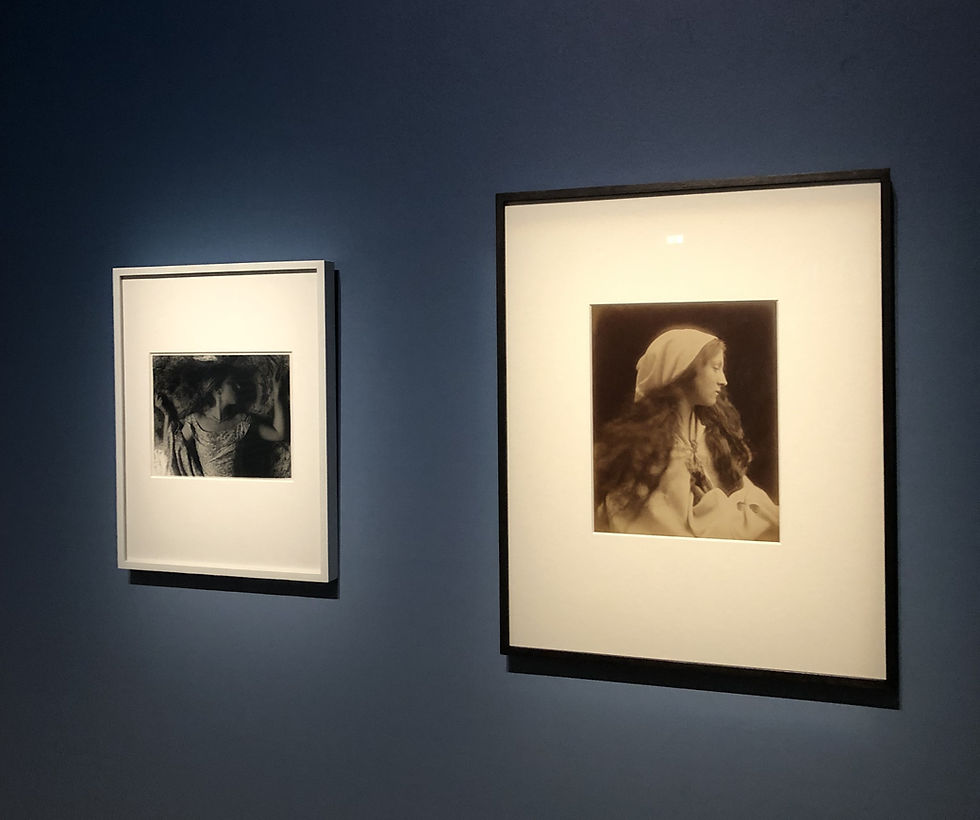Lee Miller: Dressed a review of a new exhibition at Brighton Museum
- Megan Stevenson

- Dec 21, 2023
- 3 min read
Brighton Museum’s current exhibition Lee Miller: Dressed fluidly covers the expansive nature of Miller’s life from the 1920s to the 1950s, as she crossed from model to photographer to war correspondent, and her travels between Europe, New York, Egypt, and rural Sussex.
Lee Miller: Dressed doesn’t shy away from complicated, overlapping truths. The introductory text tells us about the abuse Miller suffered as a child, and the impact this had on her own relationship with her body. The entrance shows the clothes of a fashionable, confident woman. The jojhpurs, made by Nizam Ud-Deen in Cairo in 1938, highlight Miller’s lack of adherence to 1930s gendered fashion rules, and present the figure of a woman active and at ease in her life in Egypt. One of the first images on display is ‘Severed breasts on a plate’ (1929), a shocking and surreal image of real breasts from a mastectomy, presented as if a meal on a plate, complete with knife, fork, and tablecloth.

Lee Miller, Self Portrait modeling Jean Patou, Paris, France, 1930, Lee Miller Archives
Miller was born in New York in 1907. She first modelled for her father, an amateur photographer. At age 19 she was ‘discovered’ by Conde Nast, quickly rising to become a hugely popular model of the late 1920s. In 1929 she moved to Paris, where she became apprentice to surrealist photographer Man Ray. Together they rediscovered solarisation as a technique, Man Ray’s portraits of Miller being some of the most famous examples of the method.
In Paris, Miller fell into artistic circles, becoming friends with Pablo Picasso, Jean Cocteau, and Dora Maar to name a few, all of whom she photographed. These friendships, and the life she had loved, were a driving force in her decision to stay in Europe at the outbreak of the Second World War. Writing to her brother John, she said ‘I have eaten the butter, so now I will face the guns.’ Miller became a war photojournalist for Vogue, photographing London during the Blitz, active combat with ground forces in Europe, the liberation of Paris, and the horrors from within newly liberated concentration camps.

Lee Miller: Dressed exhibition, including dress by Carli Gry
The centre of this exhibition is the clothes. Each of the three rooms is structured around Miller’s outfits, with dressed mannequins taking centre stage, her photographs lining the walls around them. The Jantzen jumpsuit (one of the first examples of unisex fashion), and a knuckle duster worn as a pendant, present Miller as a woman who was tough and boundary pushing. The sharply shouldered 1930s dress (possibly Schiaparelli) and grand black fur coat give her glamour a practical, even defensive edge. There seem to be layers of meaning in everything: a 1946 dress made by Carli Gry, with a red striped top half and a skirt hand painted with scenes of Copenhagen, was made from repurposed fabric intended to line Nazi uniforms. Footage from ‘Candid Camera with Lee Miller’ plays in the same room, and in it we see Miller at work her Gry dress, the black and white footage not able to convey the vibrancy of the red stripes and sweetly painted design that stands in the room with us.

Lee Miller, Irmgard Seefriend, opera singer, singing an area from Madame Butterfly, Vienna Opera House, Austria, 1946, Lee Miller Archives
If the clothes are how people saw Miller, her photographs are what she saw in turn. Many of her images are obviously influenced by surrealism, especially the idea of objet trouvé, or the ‘found object’, where everyday or random objects are appreciated aesthetically where they would normally be overlooked. Miller applied this to her practice, finding moments to shed a new light on through image-making. One of the most poignant images in the exhibition is of Irmgard Seefried singing an aria in the ruins of Vienna Opera House, her silhouetted hands raised as if attempting to grasp her surroundings. Another, this time more whimsical version of Miller’s eye comes in the view of her friends’ legs as they travelled through Egypt, each recognisable by their distinctive dress.

Lee Miller, Legs (Mafy Miller, Dimitri Papadimos, George Hoyningen-Huene, Roland Penrose), Siwa, Egypt, 1939, Lee Miller Archives
Lee Miller: Dressed opens less than two months after the release of the new publication Lee Miller: Photographs, edited by Antony Penrose. The book presents an abundance of Miller’s work and gives more insights into her life. There is a greater sense of the impact the Second World War had on Miller; one particularly punching line describes her looking for her missing Paris friends as she entered the newly liberated concentration camps of Dachau and Buchenwald. Taken together, this exhibition and book present the wide array of work Miller was engaged with, as well as providing insights into the determined photographer she was, and the relationships that drove her personal and professional life.
Lee Miller: Dressed is open at Brighton Museum until 18 February 2024.



Comments